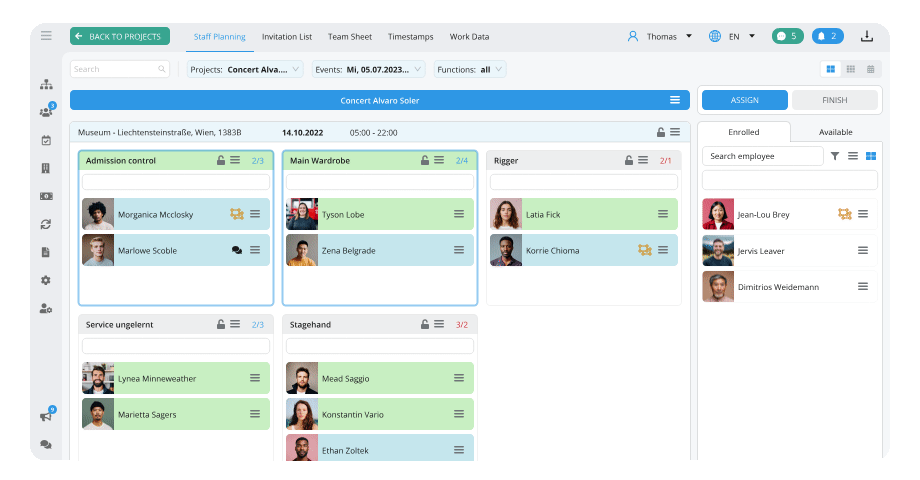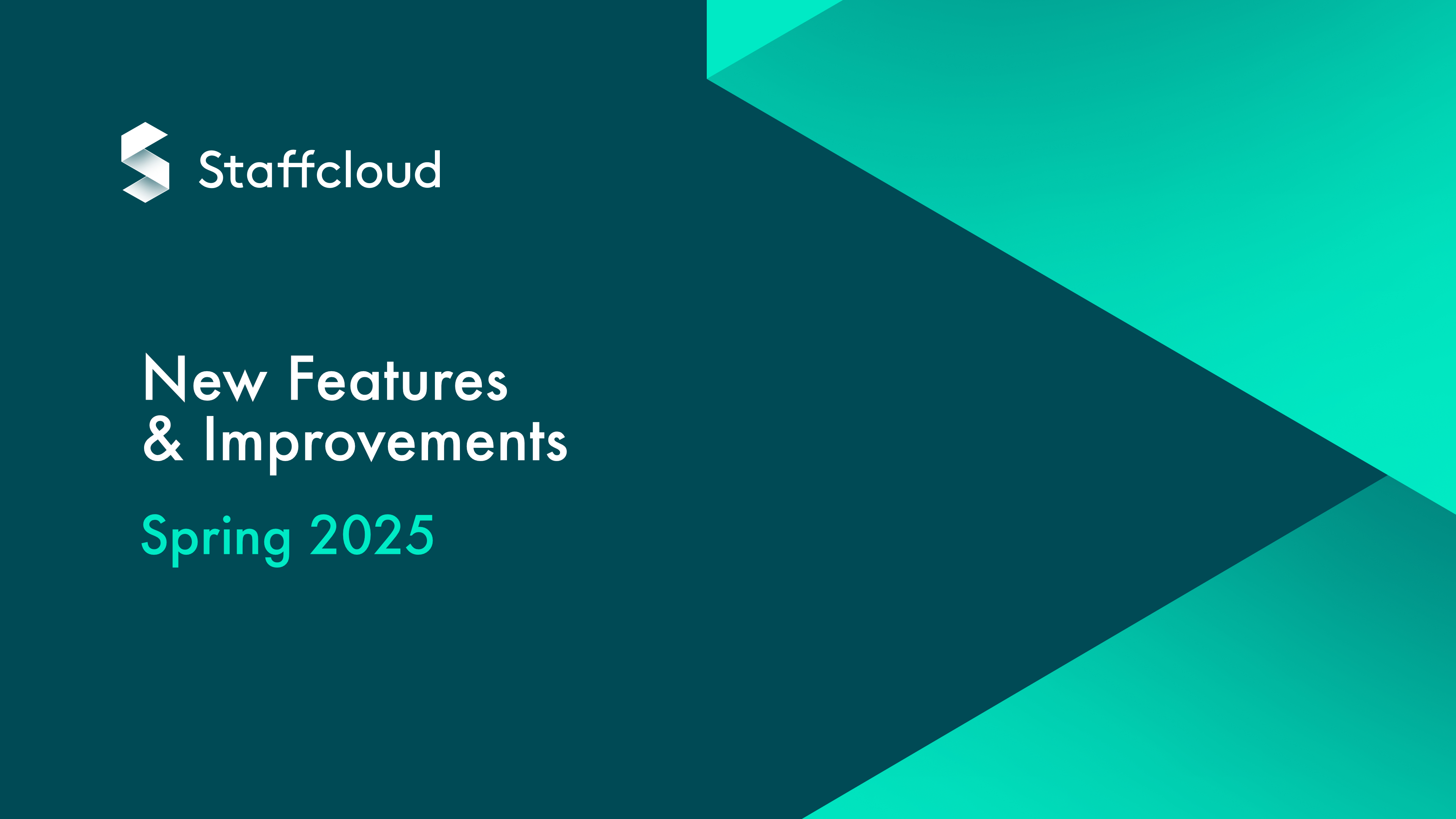When it comes to staff planning with temporaray employees, short-term help and flexible personnel, there is much to consider. Walking the line between cost-effective planning and contractual obligations can be a difficult task.
What is true for any relationship also applies to staff planning with short-term help, flexible personnel and temporary employees: communication, reliability, and trust are crucial for its success or failure. In this article, you will find out what exactly this comprises and how you, as an employer, can ensure that your employees are content while the work gets done and payroll expenses remain at a tenable level.
What makes staff planning so tricky
The following factors can make staff planning resemble a game of 3D chess:
- You have to evaluate in advance how many employees with a certain skill set are needed at which time and where. Considerations for this so-called demand planning are: seasonal fluctuations, the current order situation, campaigns and events, and many more.
- In addition, contractual agreements, legal framework and the assignee’s personal preferences need to be taken into account as well.
- The entire task needs to be handled efficiently to avoid payroll expenses going through the roof.
- And it all has to happen quickly – after all, as part of the HR department, you have other things to do as well.
Demand planning as a basis for staff planning
Ultimately, this first step already holds the key to success. Once you know each company department’s need with sufficient advance notice, hardly anything can go wrong in staff planning. However, the reality of this often ends up being quite different: projects suddenly have to be moved, orders are being cancelled, a flexible employee’s tasks no longer match their requested qualifications, etc.
To ensure that you do not lose track of changes, you as the HR department rely on feedback from your co-workers. You need to collect the following data points:
- Trends from previous years
- Expected demand for each department
- Deadlines and employees needed for one-time events such as trade shows and festivals
What can be particularly helpful is using a software which can help you compile and save these data points. For example, managers should be able to enter their required needs in the software tool several months in advance. Employees, on the other hand, should be able to communicate their holiday days or other absences (uni, doctor’s appointment, other work) through the same software.
Thus, the lines of communication are getting shorter and you don’t have to struggle over endless spreadsheets to find out, for example, exactly how many hostesses were needed again for DMEXCO 2020, or whether your employee Jane was free that day.
Contractual agreements and legal framework
Depending on your sector and the nature of the work your flexible employees are meant to carry out, different rules may apply. However, if your demand for employees who can be assigned flexibly is high, you should ensure that you communicate your requirements early on, or that you put them in writing.
For example in Switzerland, there is no official regulation concerning “stand-ins”, i.e. those employees who are available to work on call. This means that employers can essentially apply whatever rules they want. However, if you want to prevent dissatisfaction among employees and a resulting high turnover, stand-ins should be paid better for their working times than those working regular shifts.
Further legal factors which you should take into account are:
- Regulations regarding break times, overtime and holiday entitlement
- Full time and part time contracts, as well as other existing employment contracts
- Contracts with temp agencies and their limitations – for example, temp agency workers in Germany are only allowed to work for a company for a maximum of nine months before they have to be employed by this company.
Communication, the crux of staff planning
This is where it gets really exciting. Even if one of your flexible staff members has maybe been given one too few shifts this month, or if someone else had to do overtime, you can prevent this from turning into a disadvantage as long as your communication is clear and open.
Again, we recommend using a digital solution in this case to make your life and the lives of all your staff easier. Providers such as Staffcloud even offer apps which flexible employees can use to enter their availability and qualifications, as well as quickly accepting or denying assignments or working times. This means the following for your HR department: communication is clear and straightforward, while the demand for short-term help can be satisfied within a short time where necessary.
Last but not least: what happens if your plans were wrong?
Well, first of all, it is unlikely that everything always goes exactly to plan. If too many employees are scheduled, this means bearing extra costs which could have been otherwise avoided. However, this won’t endanger the entire endeavor.
A worse situation arises if there are suddenly not enough people for all the roles. In this case it might be helpful to have recourse to a pool of personnel who can be assigned last minute and who are happy to come to work spontaneously as long as the money is right. When calling upon them, there is likely no more time to make a detailed query about their qualifications or negotiate payment. This means it is even more important to have an established process which makes these steps unnecessary from the start.
How is Mr. Meeseeks linked to staff planning?
Do you know Mr. Meeseeks? He is the little blue man from the series “Rick and Morty” who jumps out of a box at the push of a button to do exactly one task. Once that task is done, he disappears. Sadly, your staff planning is not going to be quite as easy as conjuring Mr. Meeseeks from a box, particularly if you want to keep your employees on for a while so that you can rely on their acquired knowledge and experience in the future.
The higher the requirements for your flexible employees’ qualifications, the more complex the task becomes. Nevertheless, there are technologies and systems which can simplify your staff planning significantly. They can turn the task of requesting more human resources into little more than the push of a button.
We would be happy to tell you more about how Staffcloud can help you plan according to your needs, keep an eye on contractual agreements, and fill even short-term gaps in a straightforward manner.
.jpg)







